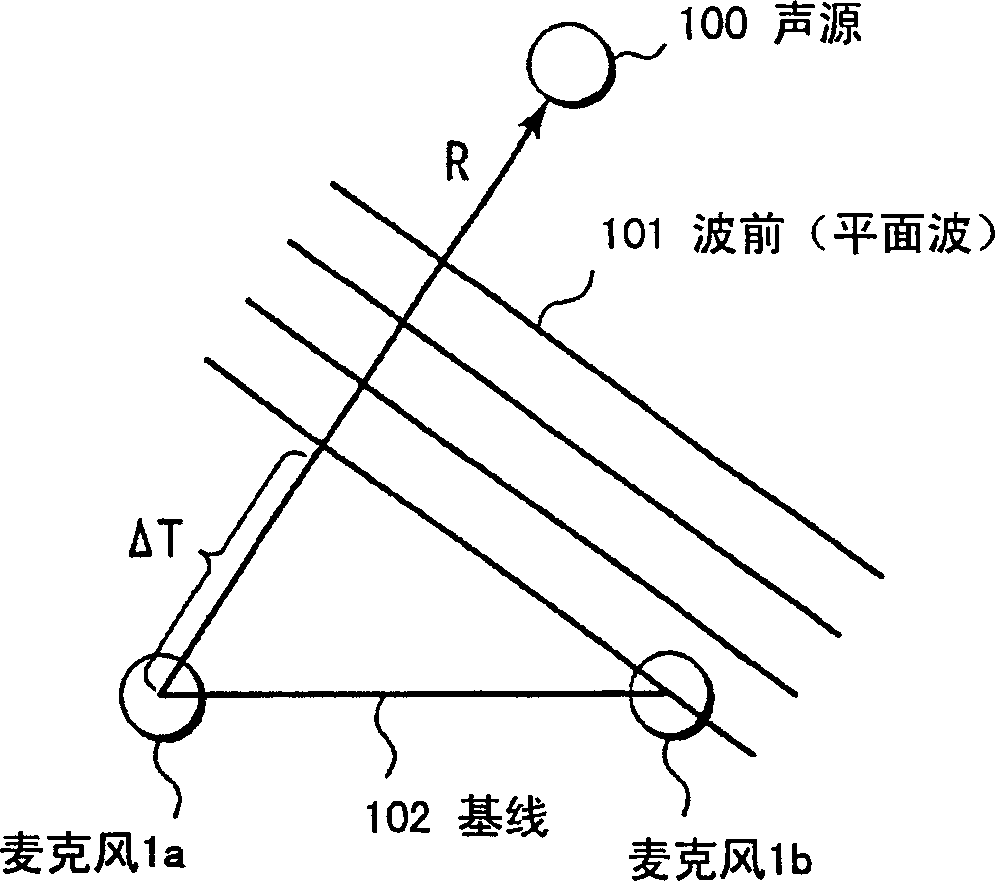Acoustic signal processing apparatus and processing method thereof
A sound signal processing and sound signal technology, applied in the field of sound signal processing, can solve the problems that the sound source is limited, cannot handle various sounds, and the number of sound sources cannot be greater than the number of microphones, etc.
- Summary
- Abstract
- Description
- Claims
- Application Information
AI Technical Summary
Problems solved by technology
Method used
Image
Examples
Embodiment Construction
[0040] Embodiments of the sound signal processing apparatus according to the present invention will be described in detail below with reference to the accompanying drawings.
[0041] FIG. 1 is a functional block diagram of a sound signal processing device according to an embodiment of the present invention. The sound signal processing device includes: a microphone 1a, a microphone 1b, a sound signal input unit 2, a frequency resolver 3, a two-dimensional data forming unit 4, a pattern detector 5, a sound source information generator 6, an output unit 7 and a user interface unit 8.
[0042] [Basic principle of sound source estimation based on phase difference of each frequency component]
[0043] The microphones 1a and 1b are two microphones separated by a predetermined distance in a medium such as air. The microphones 1a and 1b are means for converting medium vibrations (sound waves) at two different points into electrical signals (sound signals). Microphones 1a and 1b are ...
PUM
 Login to View More
Login to View More Abstract
Description
Claims
Application Information
 Login to View More
Login to View More - R&D
- Intellectual Property
- Life Sciences
- Materials
- Tech Scout
- Unparalleled Data Quality
- Higher Quality Content
- 60% Fewer Hallucinations
Browse by: Latest US Patents, China's latest patents, Technical Efficacy Thesaurus, Application Domain, Technology Topic, Popular Technical Reports.
© 2025 PatSnap. All rights reserved.Legal|Privacy policy|Modern Slavery Act Transparency Statement|Sitemap|About US| Contact US: help@patsnap.com



